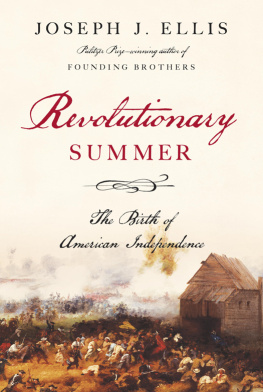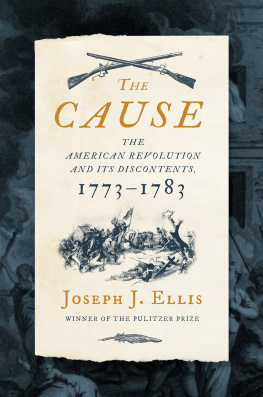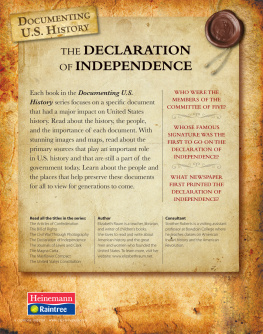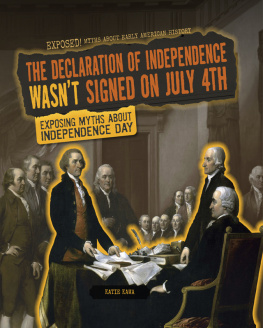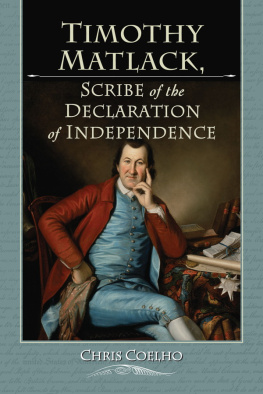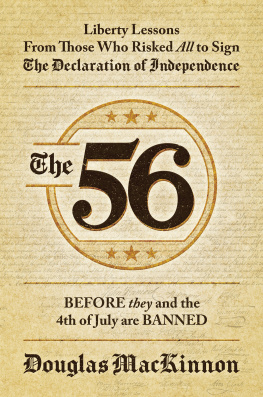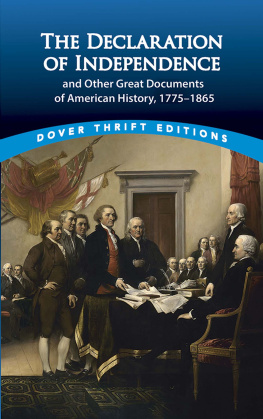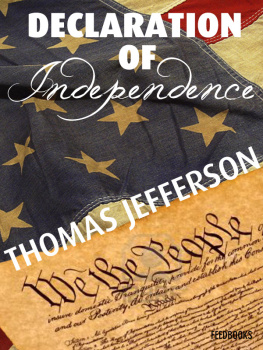Joseph J. Ellis
All rights reserved. Published in the United States by Vintage Books, a division of Penguin Random House LLC, New York. Originally published in hardcover as a part of American Sphinx by Alfred A. Knopf, a division of Penguin Random House LLC, New York, in 1997.
Vintage and colophon are registered trademarks of Penguin Random House LLC.
Joseph J. Ellis
Joseph J. Ellis is the author of many works of American history including Founding Brothers: The Revolutionary Generation, which was awarded the Pulitzer Prize; and American Sphinx: The Character of Thomas Jefferson, which won the National Book Award. He recently retired from his position as the Ford Foundation Professor of History at Mount Holyoke College and lives in Amherst, Massachusetts, with his wife and their youngest son.
A LSO BY J OSEPH J. E LLIS
The Quartet: Orchestrating the Second American Revolution, 1783-1789
Revolutionary Summer: The Birth of American Independence
First Family: Abigail and John Adams
American Creation: Triumphs and Tragedies at the Founding of the Republic
His Excellency: George Washington
Founding Brothers: The Revolutionary Generation
American Sphinx: The Character of Thomas Jefferson
Passionate Sage: The Character and Legacy of John Adams
After the Revolution: Profiles of Early American Culture
School for Soldiers: West Point and the Profession of Arms (with Robert Moore)
The New England Mind in Translation
I
P HILADELPHIA : 177576
It is easier to reach a confident opinion about the sort of man he was in 1776 than to do so for 1793 or 1800.
DUMAS MALONE ( 1948 )
I T WAS A PROVINCIAL version of the grand entrance. On June 20, 1775, Thomas Jefferson arrived in Philadelphia in an ornate carriage, called a phaeton, along with four horses and three slaves. The roughly three-hundred-mile trip from Williamsburg had taken him ten days, in part because the roads were poor and poorly markedtwice he had been forced to hire guides to recover the routeand in part because he had dawdled in Fredricksburg and Annapolis to purchase extra equipment for his entourage. As the newest and youngest member of Virginias delegation to the Continental Congress, he obviously intended to uphold the stylish standard of the Virginia gentry, which the Philadelphia newspapers had recently described, with a mixture of admiration and apprehension, as those haughty sultans of the South.
So he had outfitted Jesse, Jupiter and Richard, his black servants, in formal attire befitting the regalia of a proper Virginia gentleman, to include a postilions whip for Jesse, who rode the lead horse in the team. Richard sat inside the phaeton with his master; Jupiter, who had been Jeffersons personal servant and companion ever since student days at the College of William and Mary, trailed behind with the two extra horses. (Jupiter, as it turned out, was to accompany Jefferson throughout most of the early ride into history; he died in 1800 just before Jefferson ascended to the presidency, after drinking a medicinal potion prepared by the witch doctor within the slave quarters at Monticello.) No contemporary record survives of the impression this elegant entourage made upon the more austere Quaker residents of Philadelphia, but the jarring juxtapositions that lie at the center of Jeffersons character and career had already begun to reveal themselves. The man who, precisely a year later, was to draft the most famous and eloquent statement of human rights in Americanand perhaps worldhistory entered national affairs as a conspicuously aristocratic slave-owner.
So much that we know about young Jefferson derives from later recollections, when memories were clouded by the golden haze surrounding the mythology of the Declaration of Independence and remembered anecdotes were realigned to fit various personal and political agenda. Moreover, there is the nearly insurmountable difficulty posed by what Jefferson specialists have come to call the problem of the Shadwell fire, which destroyed most of Jeffersons personal papers in 1770, making the recovery of his formative years an exercise in inspired guesswork. Given the paucity of early evidence and the veritable flood of material that begins to flow after 1776, the temptation to read the young revolutionary through the elder statesman is nearly irresistible and, in some ways, unavoidable.
Take, for example, the matter of young Jeffersons physical appearance. What did the thirty-two-year-old delegate from Virginia look like? All agree that he was tall, six feet two inches, perhaps a quarter inch taller. After that, however, the picture begins to blur. Edmund Bacon, Jeffersons overseer at Monticello during the presidential years and then into his retirement, recalled that his skin was very clear and purejust like he was in principle. But most other reports, and most of the later portraits, describe him as red-faced and heavily freckled, with a complexion that was either scorched or radiant, depending on the viewers predilections. The only contemporary picture of young Jefferson, a pen-and-ink drawing done by Pierre du Simitire in 1776, shows a somewhat padded face with a vacant stare. And there are reasons to doubt the drawing is really Jefferson at all. But most descriptions of the older Jefferson emphasize his scranny or thin face. Bacon said he had no surplus fleshand bright, luminous eyes. The color of his eyes is also controversial. Virtually all the later reports indicate they were clear blue; the earlier descriptions, and most of the portraits, have them hazel or green. Perhaps they changed color in different light.
One of his ex-slaves, Isaac, emphasized his erect posture. Mr. Jefferson was a tall, straight-bodied man as ever you see, he recalled. Nary a man in this town walked so straight. Bacon agreed that Jefferson was straight as a gun barrell. But others, mostly enemies, described him as loosely jointed and seemingly collapsible, all wrists, elbows and ankles. The discrepancy might have been a function of different postures. On his feet he was square-shouldered and formal. He bowed to everyone he met and tended to stand with his arms folded across his chest, defining his own private space and warding off intruders. When seated, however, he seemed to melt into the upholstery with a kind of contorted grace, one hip high, the other low, shoulders slouched and uneven, his torso folded in several places, part jackknife and part accordion.


